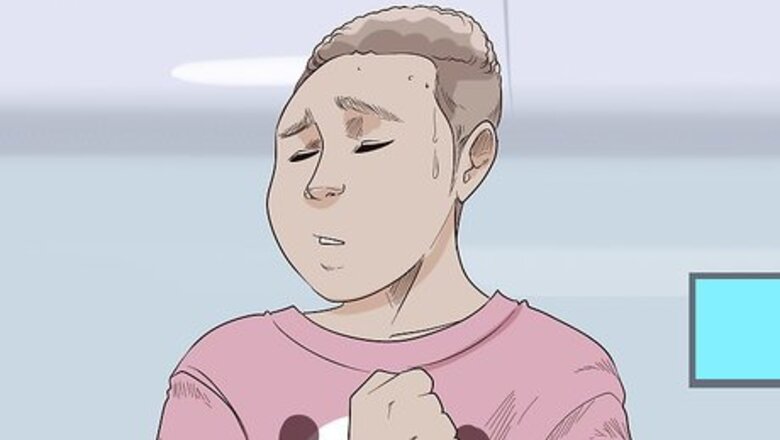
views
Catching Your Breath
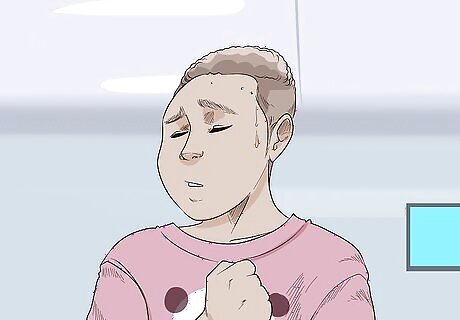
Discontinue any activity that made you lose your breath. If you experience a sudden shortness of breath during physical activity, the first thing you should do is temporarily discontinue that activity. Take a break from whatever you're doing and give yourself at least a few minutes to sit down and rest until you catch your breath. Sit down, relax your shoulders, and focus on your breath. Do not attempt to resume any strenuous activities until you've caught your breath. Even then, you may want to talk to your doctor to determine the cause before resuming strenuous activities.
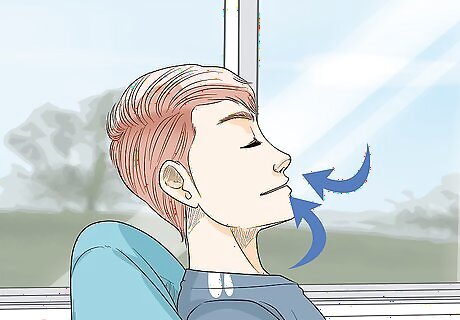
Take long, deep breaths instead of short, shallow breaths. If you're feeling short of breath, your natural instinct may be to try and breathe as rapidly as possible. However, this can actually make your situation worse. The best way to catch your breath is by taking long, slow, deep breaths down into your diaphragm. Find a comfortable position. Do not abruptly halt your exercise. Slow to a walk until you catch your breath if necessary. Try to relax your neck and shoulders. Take a slow, deep breath into your diaphragm (below your ribs). Your inhalation should be slow and spread out over two to five seconds. Feel your belly rise as you inhale, and hold the breath for two to five seconds. Exhale slowly through your mouth. Make sure to exhale as slowly as possible because this will help to relax your muscles. If you want, you can also press gently on your belly to put pressure on the diaphragm. Repeat until you feel like your breath has stabilized.
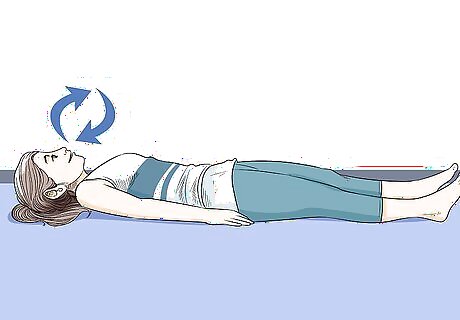
Breathe while lying flat on the floor. Some people find that lying on the floor can make breathing easier. It allows you to stretch out your body and facilitates an easier flow of air into your lungs without the pressure that may come with sitting or standing. Lie on a blanket or rug to make the floor a little more comfortable. Keep your back and neck straight with your legs outstretched and just slightly apart. Your arms should be at your sides without touching your body, and your palms should be open and facing up. Breathe through your nose, and keep your mouth closed. The hairs in your nostrils can help filter out dust and other irritants from the air. Breathe deeply through the abdomen. You should feel your belly rising and falling with each breath. Repeat until your normal breathing patterns resume.
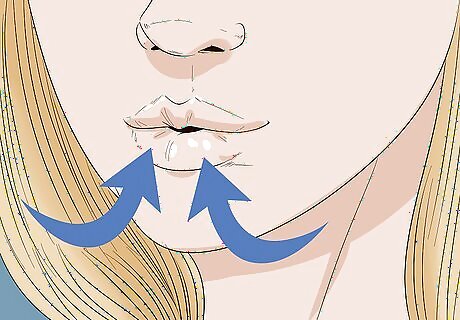
Try breathing through pursed lips. Breathing through pursed lips can help slow down your respiration rate and ensure that you get adequate air into your lungs. You should continue to inhale as you would for normal deep-breathing exercises, then exhale slowly by forcing the air out of your mouth. Breathe in slowly through your nostrils. Extend the inhalation over two to five seconds. Purse your lips. Your mouth should look and feel as though you're about to blow out a candle. Breathe out through your pursed lips. Your exhalation should be very slow and extended over two to five seconds. Continue breathing through pursed lips until you feel like your respiration has returned to normal.
Finding Other Ways to Improve Your Breathing
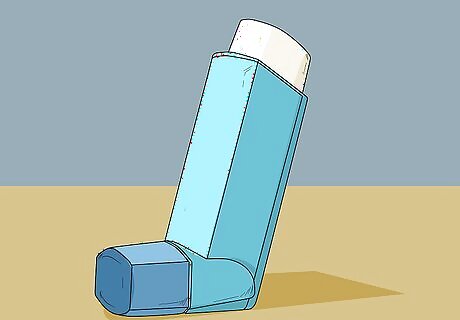
Try using bronchodilators. Bronchodilators are medications that help physically open your airways. However, bronchodilators are not for everyone. They are most effective for treating an asthma attack, so bronchodilators may not help your shortness of breath if you do not have asthma. Many bronchodilators incorporate a corticosteroid to help ease breathing and improve air flow. These medications are typically only available by prescription, so talk to your doctor if you think bronchodilators may help you. Common bronchodilators include Aerobid, Albuterol, Azmacort, Flovent, Medrol, and prednisone.
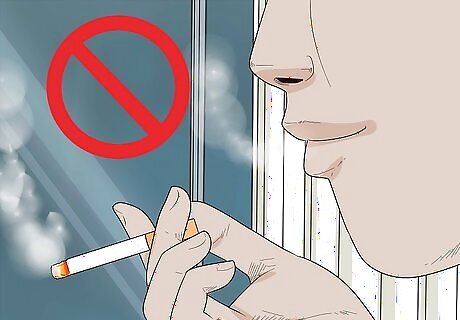
Quit smoking and avoid second-hand smoke. Smoking is one of the biggest causes of shortness of breath. Even if you don't smoke, being around other people's second-hand smoke can irritate your lungs and make breathing difficult. If you're currently a smoker, you should quit as soon as possible. You should also avoid being around smokers, regardless of whether or not you yourself smoke. Ask your family, friends, and coworkers to help you quit smoking. Ask them to keep an eye on you and stop you from smoking any time you're tempted. Use smoke cessation products like nicotine gum, patches, and lozenges. All of these products are available over the counter without any prescription. Try to manage your stress and avoid triggers that make you crave tobacco.
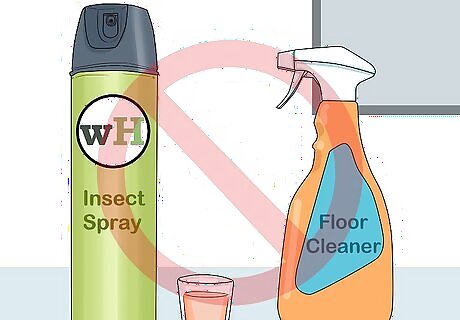
Avoid pollutants, chemicals, and scented products. Products with a strong scent or a significant air particle presence can adversely affect your breathing. Even household chemicals like cleaning products, candles, and perfumes can affect your ability to breathe. If you must use household chemicals like cleaning products, make sure you do so in a well-ventilated area. Turn on a fan and open all the windows to allow your home to air out. If you work with chemicals, take safety precautions by using a respirator and any workplace ventilation options at your disposal.
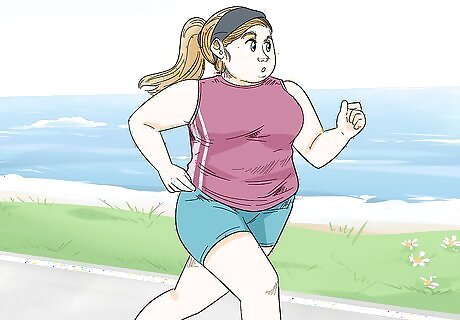
Lose weight if you are obese or overweight. Being overweight can make it difficult to breathe, especially during mild to moderate physical activity. If you believe that your breathing difficulties may be caused by a weight problem, talk to your doctor about a weight-loss plan to help you safely and effectively reduce your weight. Eat smaller meals. Eating large meals will put strain on the digestive system and this may lead to reflux and irritation in your esophagus. Focus on eating healthy, low-calorie meals. Avoid anything greasy, fatty, or high in sugar. Increase the amount of exercise you get. Talk to your doctor about how to do this safely. Once you get approval from your doctor, aim to get at least 150 minutes each week of moderate exercise, or 75 minutes each week of higher-intensity aerobic exercise.
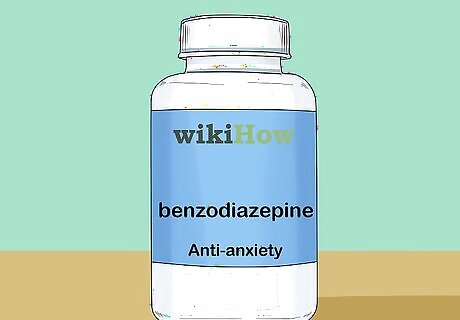
Treat anxiety. Some individuals who are prone to anxiety might experience breathing problems during a panic attack. This usually involves a rapid heartbeat, short, shallow breathing patterns, and an overwhelming sense of fear or dread. Talk to your doctor if you believe you may have an anxiety disorder. Having your anxiety diagnosed is the first step in treating the symptoms. Anti-anxiety medications may help reduce the symptoms of a panic attack, which can include shortness of breath. Common anxiety medications include benzodiazepines and selective serotonin re-uptake inhibitors (SSRIs). Cognitive behavioral therapy (CBT) can also be very effective at treating anxiety. Though it may not help during an active panic attack, CBT can help manage your anxiety and reduce the overall frequency/intensity of panic attacks. You might also try meditation as a way to control your anxiety and breathe deeply.
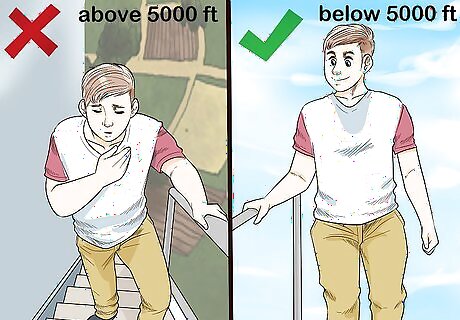
Stay at lower elevations. Any type of physical exertion at elevations above 5,000 feet (1,524 meters) can impair your ability to breathe. You may also experience elevation sickness at high elevations if you are not properly acclimated. If you experience the symptoms of elevation sickness, including headaches, confusion/disorientation, and difficulty breathing, it's important that you return to lower elevations as soon as possible. Elevation sickness usually goes away after returning to a lower elevation. Common treatments and preventative measures for elevation sickness include: taking medications like Acetazolamide, Dexamethazone, Methazolamide, and Sildenafil taking natural supplements like gingko, vitamin C, and other antioxidants staying hydrated adjusting to higher elevations gradually over several days
Recognizing the Signs of a Serious Medical Issue
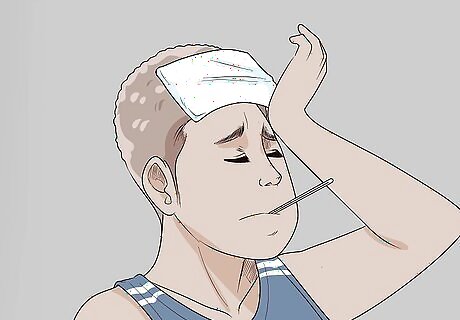
Know when to see a doctor. Depending on your symptoms, you may need to see a doctor to treat your breathing difficulties. Some breathing problems are symptomatic of a more serious health problem. See a doctor right away if you experience any of the following symptoms: difficulty breathing while lying flat high fever and/or chills swelling in the feet and ankles feeling winded from walking up a flight of stairs feeling out of breath while doing moderate walking on a level surface wheezing while you breathe during physical activity chronic coughing and persistent gasping for air
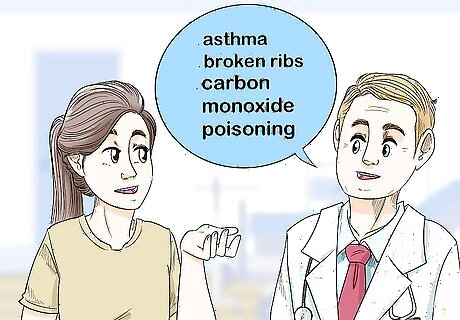
Learn about possible causes of acute shortness of breath. If you experience a sudden onset of shortness of breath (called acute shortness of breath), it could be caused by many possible conditions. If you do not have any pain or other symptoms associated with your shortness of breath, it could be a simple case of overexertion. However, it could also be a more serious medical problem. Talk to your doctor right away to assess whether you have any other medical issues. Common ailments associated with acute shortness of breath include, but are not limited to: asthma broken ribs carbon monoxide poisoning collapsed lung elevation sickness fluid build up around the heart or lungs heart attack heart failure low blood pressure obstruction in the upper airways pulmonary embolism pulmonary infection (pneumonia) sudden loss of blood
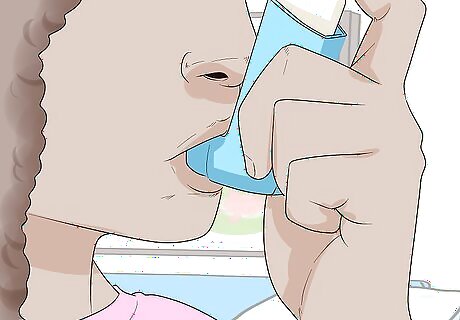
Understand the causes of chronic shortness of breath. Chronic (or long lasting) shortness of breath is usually caused by a medical problem. It could be something relatively benign and easy to fix, like being unaccustomed to physical activity. However, many of the conditions that cause chronic breathing problems are very serious. Talk to your doctor to evaluate your overall health if you've experienced breathing problems lasting longer than two weeks. Common conditions associated with chronic breathing problems include, but are not limited to: asthma chronic obstructive pulmonary disorder deconditioning of the body after prolonged periods of inactivity heart dysfunction interstitial lung disease lung cancer obesity tuberculosis




















Comments
0 comment